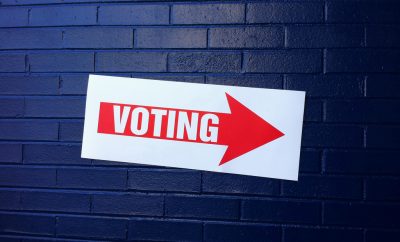
Image courtesy of [Cristian C via Flickr]
Law
U.S. Drug Policy: Civil Rights Issue or Fair Enforcement?
The civil rights movement in America attempted to end segregation and racial discrimination of black Americans and secure federal protections of their rights. The Civil Rights Act of 1964 seemingly sealed the deal, prohibiting discrimination based on race. In spite of that, there is an argument to be made that racial discrimination is still a persistent problem in the United States. One important facet of the discussion is centered around the “war on drugs” and the so-called “tough on crime” policy approach that the United States has adopted since the 1970s. Racially disproportionate drug arrests have resulted in mass incarceration and prompted civil rights concerns. Read on to learn more about current drug policy and its implications in relation to civil rights.
History of Inequality in U.S. Drug Policy
Throughout history there have been many instances in which unequal treatment of various minority groups was evident in American drug laws. The first anti-drug law dates back to 1875, when smoking opium was penalized in San Francisco, primarily, it is believed, to stigmatize Chinese immigrants. In 1914 the Harrison Narcotics Act expanded the powers of the federal government, and concurrently the media portrayed black Americans as the primary users of cocaine, one such narcotic. Later, multiple reports by the media tied Mexican immigrants, who were entering the country for agricultural jobs, to marijuana-related violence. The result of that particular stereotype was the Marijuana Tax Act of 1937.
Congress created its first mandatory minimum sentencing law in 1952, the Boggs Act, which required a minimum sentence of two to ten years for first-time marijuana possession. But the most notorious mandatory minimum drug laws were enacted in New York under Nelson Rockefeller, who was the governor at the time. That mandatory sentence threshold was raised to a minimum of 15 years and a maximum of life in prison. The “Rockefeller Drug Laws” were enacted in 1973, signifying the beginning of a long-standing “tough on crime” policy in the United States.
The Anti-Drug Abuse Act of 1986 was the culmination of the “war on drugs,” requiring identical penalties (a five-year minimum sentence) for five grams of crack cocaine and 500 grams of powder cocaine. As crack cocaine was cheap, it dominated poor black communities, while more affluent, usually white communities, used the more expensive powder cocaine.
Are the U.S. Drug Policies changing?
Under the Obama Administration, the ratio of crack to powder cocaine was significantly reduced when the Fair Sentencing Act was signed into law in August 2010. The current administration also acknowledged that the previous laws were discriminatory and disproportionately impacted communities of color.
State laws are also slowly changing, with California at the forefront of the movement. A new law, “Proposition 47,” enacted in 2014, reduces simple drug possession from a felony to a misdemeanor.
Politicians are also starting to speak up, calling for the end of “War on Drugs.” Outgoing Attorney General,Eric Holder is one of the most vociferous proponents of reducing mass incarceration and re-integrating formerly incarcerated individuals back into society.
In addition, legalization of marijuana is a hot topic everywhere in the United States. More and more states have legalized the drug for either recreational or medical use, prompting the idea of country-wide legalization and regulation in the future. The New York Times editorial board and President Barack Obama have spoken out in support of the legalization movement.
It’s plausible that American drug policy is undergoing a transition from prohibition and harsh sanctions toward regulation and rehabilitation practices. But it can still be characterized as a punitive system, highly centered on deterrence through long and harsh sentencing practices. There are also many concerns that the current drug policies are still racist in practice. People of color are disproportionally imprisoned for drug offenses, often creating vicious circles of poverty and crime.
What are the main concerns with the current U.S. Drug Policy?
Our drug policy enforcers are part of the judicial system, and there are many concerns that the judicial system treats members of minority populations more harshly than their counterparts. For example, black men are stopped and frisked at disproportionately higher rates than members of other communities. In 2011 the number of stops of young black men in New York City topped the city’s entire population of young black men: 168,126 stops compared to a population of just 158,406 young black men. In the same year, 52.9 percent of the people stopped and frisked were black, 33.7 percent were Latino, and only 9.3 percent were white. The stop and frisk racial landscape didn’t change much in 2014: 54 percent of those who were stopped and frisked were black, 27 percent were Latinos, and 12 percent were white. African Americans are also stopped more frequently when driving or entering the country.
Critics of the drug policy worry that black Americans are also more likely to be arrested. The rate of arrests for black Americans is 2.5 times higher than white Americans. At the same time, even though the black and white population use marijuana at roughly the same rates, black Americans are four times more likely to be arrested for drug offenses. Watch the video below to learn more about racial disparities in marijuana-related arrests.
Finally, black users are more often convicted and incarcerated for drug felonies. In 2009, 50.5 percent of the state prisoners convicted on drug offenses were African Americans, 17 percent were Latinos, and 30.1 percent were whites. Black men and women were also sent to prison on drug charges at 11.8 and 4.8 times the rate of their white counterparts, respectively.
Critics of our current polices point out that as a result of such discriminatory treatment, black Americans enter the prison system at a higher rate, stay there longer, and are more likely to go back there again. The harsh penal sanctions for drug offenses result in mass incarceration of individuals of color. Black Americans convicted of drug offenses constitute 53.3 percent of those admitted to state prisons. Watch the video below to learn more about mass incarceration in the United States.
Who thinks the current drug laws aren’t discriminatory?
There is another point of view that claims that the notion of differential treatment according to race is non-existent. Those who subscribe to that school of thought argue that African Americans simply commit more drug-related offenses. This argument posits that the police and criminal justice system are not biased toward minorities. It further asserts that the reason why disproportionately more black Americans end up in the criminal justice system has to do with relative crime rates, not racial bias. Some conservative voices hold the same view, citing that African Americans simply commit more crimes, especially those involving drugs. The video below shows Bill O’Reilly, a FOX News commentator, speaking in support of this point of view.
So, is U.S. Drug Policy a Civil Rights Issue?
What is a “Civil Rights Issue”?
Civil rights are centered on the notion of discrimination. A civil rights issue arises when an individual or group has been discriminated against on the basis of its race, sex, religion, age, physical limitation, or orientation. Civil rights issues are often discussed in the realm of employment or housing discrimination. Such spheres can be considered traditional civil rights battlegrounds.
The criminal justice system has been long overlooked when discussing civil rights violations. Only relatively recently did the ACLU and other civil and human rights groups begin to acknowledge that sentencing practices for drug offenses and the overall treatment of minorities in the criminal justice system is a civil rights issue.
How does the U.S. Drug Policy relate to Civil Rights?
Those who argue that the U.S. Drug Policy is a civil rights issue focus on the particular emphasis in drug laws that are not equal in their intent or enforcement. The majority of drug crimes are not committed by minorities, but the prison system is disproportionally filled with African Americans and Latinos.
The public has long associated poor communities of color with drugs and crime, a notion that was long perpetuated by the media. More minority arrests and convictions for drug offenses result in the belief that certain parts of the population use more drugs and commit more crime. It opens up a discussion on racial dynamics in American society and the impact of structural racism.
In this realm, many argue that the current drug policy can be considered a civil rights issue as it discriminates against communities of color in the criminal justice system by disproportionately targeting open drug markets in poor neighborhoods and failing to recognize the same dynamics in more affluent areas.
Conclusion
The current drug policy of the United States Government is centered on tough sanctions and long sentencing practices. It often ignores the fact that drug use is a public heath issue, locking up individuals for simple possession of certain drugs. At the same time, the enforcement of the current drug laws is disproportionately focused on communities of color, resulting in the mass incarceration of minorities. Thus, numerous civil and human rights groups consider U.S. drug policy a civil rights issue. But not everybody supports this point of view. The counter argument refuses a civil rights interpretation of the issue, claiming that minorities simply commit more drug-related offenses. No matter who is right or wrong, the current drug policy needs serious fixing.
Resources
Primary
Additional
New Jim Crow: Mass Incarceration at the Age of Colorblindness
Foreign Policy in Focus: U.S. Drug Policy
Huffington Post: More Nails in the Drug War Coffin: Top Stories of 2014
Sentencing Project: Incarcerated Parents and their Children
Human Rights Watch: Race, Drugs, and Law Enforcement in the United States Bureau of Justice Statistics: Special Report. Civil Rights Complaints in U.S. District Courts, 1990-2006.
ACLU: Driving While Black: Racial Profiling On Our Nation’s Highways
Sentencing Project: Drug Policy
Human Rights Watch: Race and Drugs
New Century Foundation: The Color of Crime. Race, Crime and Justice in America
Center For Constitutional Rights: Floyd, et al, v. City of New York, et al.
The New York Times: An Editorial Series on Marijuana Legalization
Huffington Post: Obama: Marijuana No More Dangerous Than Alcohol
Legal Information Institute: Equal Protection
Leadership Conference: Justice On Trial: Racial Disparities in the American Criminal Justice System
NYCLU Briefing 2011: Stop and Frisk








Comments